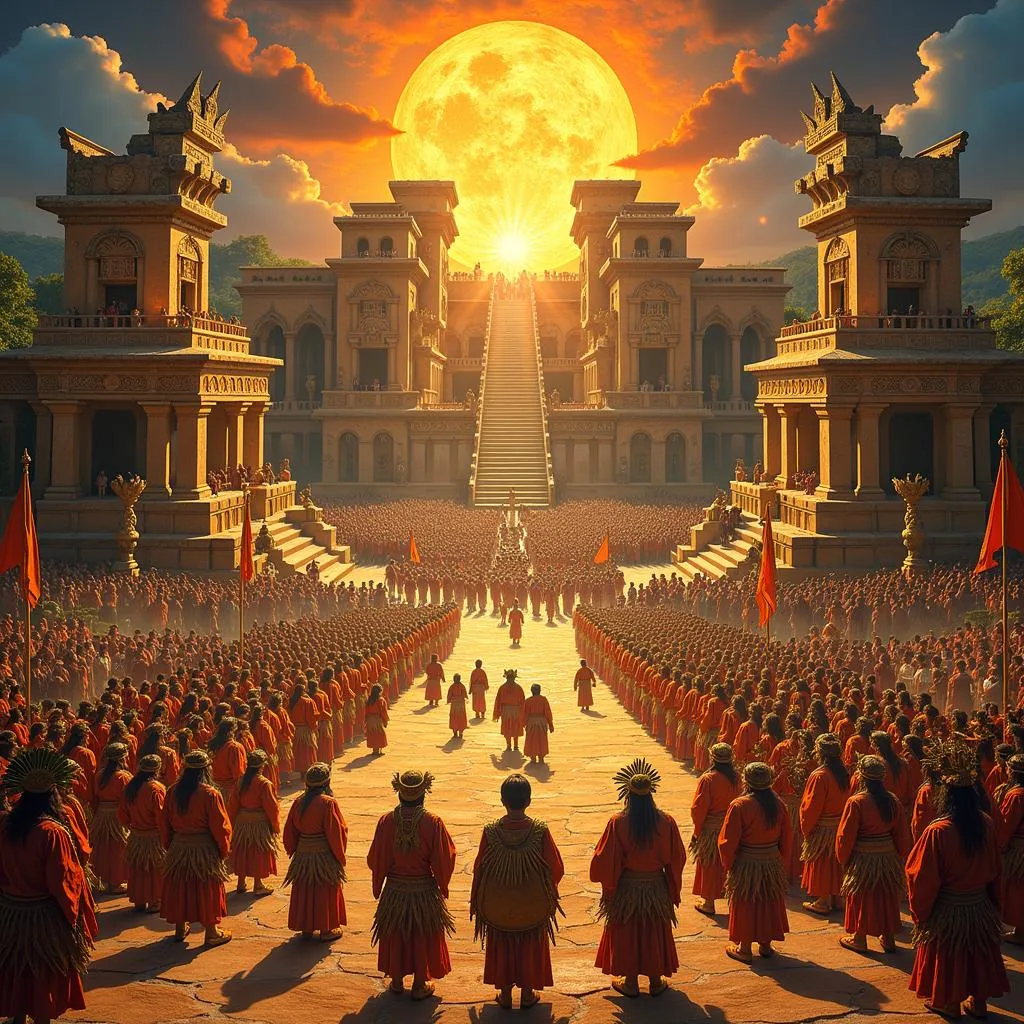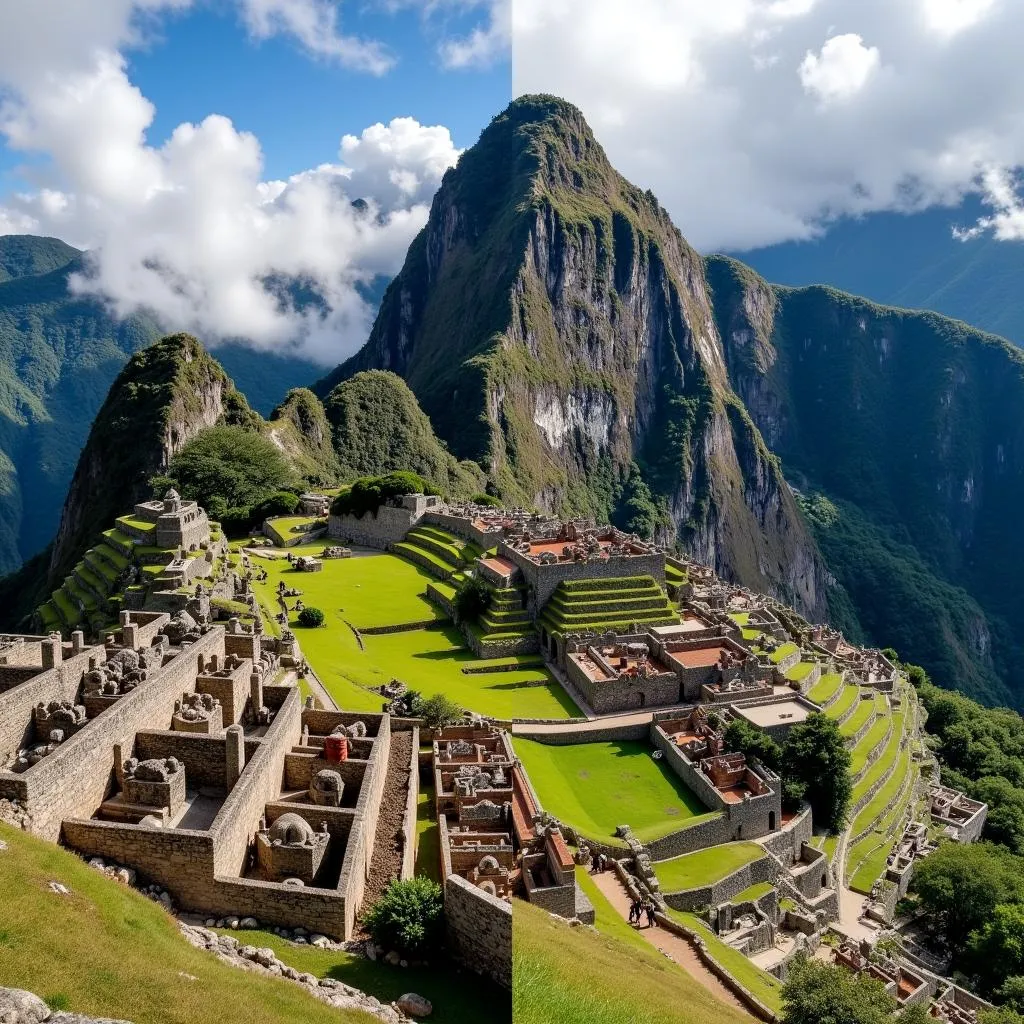The Inca and Aztec civilizations, while separated geographically and temporally, shared striking similarities in their social structures, advancements, and beliefs. These common threads, woven through the tapestry of their unique histories, offer a fascinating glimpse into the complex civilizations that dominated Mesoamerica and the Andes before European contact. So, how were the Inca and Aztec empires similar? Let’s delve into the intriguing parallels between these two powerful empires.
Shared Spiritual Beliefs and Practices
One of the most significant similarities between the Inca and Aztec societies was their deep reverence for the cosmos and the natural world. Both civilizations believed in a complex system of deities, with the sun god holding a preeminent position. For the Inca, Inti, the sun god, was the ancestor of their emperors, while the Aztecs worshipped Huitzilopochtli, the god of sun and war, as their patron deity.
Both empires developed sophisticated calendars based on astronomical observations, using them to determine planting and harvesting cycles and to guide religious ceremonies. Human sacrifice, though a practice abhorrent to modern sensibilities, was another shared aspect of their religious rituals, believed to appease the gods and maintain cosmic balance.
 Inca and Aztec Religious Ceremony
Inca and Aztec Religious Ceremony
Sophisticated Social Organization and Governance
Both the Inca and Aztec empires boasted highly structured societies with clear hierarchies and specialized roles. At the pinnacle of both societies stood the emperor, considered semi-divine and wielding absolute power. Below the emperor, a complex network of nobles, priests, warriors, artisans, and farmers ensured the smooth functioning of the empire.
The Inca, renowned for their impressive road system spanning thousands of miles, implemented a system of mandatory labor known as mit’a. This system ensured a consistent workforce for public works projects, including road construction, agriculture, and mining. Similarly, the Aztecs relied on a tribute system where conquered city-states provided goods and labor to the empire’s heartland.
Remarkable Architectural and Artistic Achievements
The Inca and Aztec empires left behind a legacy of awe-inspiring architectural marvels and artistic treasures that continue to captivate the world. The Inca, masters of stonework, constructed monumental cities like Machu Picchu, perched high in the Andes Mountains, their intricate stone structures fitted together without mortar, a testament to their engineering prowess.
The Aztecs, renowned for their urban planning, built the magnificent city of Tenochtitlán, an island city linked to the mainland by causeways and canals. Their pyramids, temples, and palaces were adorned with intricate carvings, sculptures, and colorful murals that reflected their religious beliefs and societal values.
 Machu Picchu and Tenochtitlan Architectural Comparison
Machu Picchu and Tenochtitlan Architectural Comparison
Conclusion
The Inca and Aztec societies, though geographically distant and culturally distinct, shared remarkable similarities in their religious beliefs, social structures, and artistic achievements. These parallels offer a glimpse into the complex tapestry of human civilization and remind us that even in the face of diverse environments and historical circumstances, common threads of human ingenuity, spirituality, and social organization can bind us together. Understanding these shared aspects of the Inca and Aztec empires not only deepens our appreciation for their rich histories but also encourages us to seek out the common ground that unites us across cultures and continents, fostering a greater sense of global understanding and empathy.
FAQs
-
What were the main gods worshipped by the Inca and Aztecs? The Inca revered Inti, the sun god, as their primary deity, while the Aztecs worshipped Huitzilopochtli, the god of sun and war.
-
How did the Inca and Aztec empires govern their vast territories? Both empires relied on centralized systems with the emperor at the apex. The Inca used a system of mandatory labor called mit’a, while the Aztecs imposed a tribute system on conquered city-states.
-
What are some notable examples of Inca and Aztec architecture? Machu Picchu, with its intricate stonework, exemplifies Inca architectural prowess. The Aztec capital, Tenochtitlan, showcased their mastery of urban planning with its canals, causeways, and grand pyramids.
-
Did the Inca and Aztec civilizations have writing systems? The Inca used a system of knotted cords called khipu to record information, while the Aztecs developed a system of pictograms and ideograms.
-
What ultimately led to the decline of the Inca and Aztec empires? Both empires fell to Spanish conquistadors in the 16th century, succumbing to a combination of superior weaponry, European diseases, and internal strife.
Need More Information?
For further exploration of these fascinating civilizations, consider reading about the Inca’s sophisticated agricultural techniques or the Aztecs’ impressive knowledge of astronomy and mathematics.
Get in touch with us for any assistance:
Phone: 02043854663
Email: [email protected]
Address: Khu 34, Bac Giang, 260000, Vietnam.
Our dedicated team is available 24/7 to answer your questions and provide support. Let’s work together to build a more peaceful world through understanding and empathy.